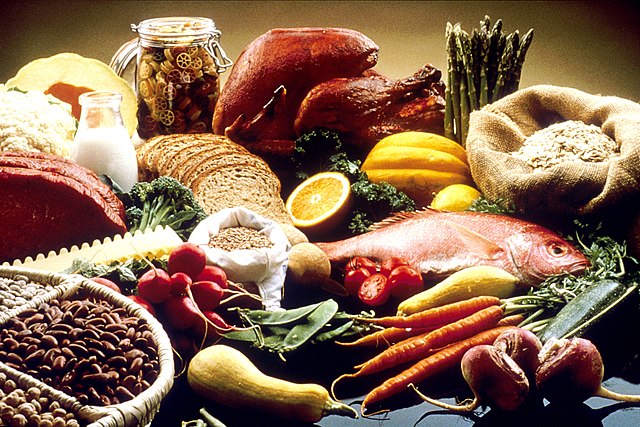A Comprehensive Exploration of Foods: Diversity, Health, and Culture
Food is not just a necessity for survival; it is a cornerstone of culture, health, and social interaction. From ancient civilizations to modern-day innovations, food has shaped human history, geography, and societies. The global diversity of food cultures reflects both the environment and the creativity of people. This article delves into the various aspects of food—its history, importance to health, global diversity, and its impact on cultures.
1. The Evolution of Food: A Historical Perspective
The history of food can be traced back to the origins of human civilization. Early humans were hunter-gatherers, relying on wild animals, fish, and edible plants for sustenance. Over time, the development of agriculture revolutionized human food consumption. The domestication of plants and animals allowed for a more stable and reliable food supply, setting the stage for urbanization and the rise of early civilizations.
In ancient Egypt, Mesopotamia, and China, early agricultural practices enabled the production of grains like wheat, barley, rice, and millet, which became staple foods for these societies. These early agricultural societies also began developing methods for preserving food, such as drying, salting, and fermenting, which helped ensure food was available year-round.
With the age of exploration and colonization in the 15th and 16th centuries, foods began to spread across the world. The Columbian Exchange, the exchange of goods, animals, plants, and diseases between the Old World (Europe, Asia, and Africa) and the New World (the Americas), introduced new foods to different regions. Tomatoes, potatoes, corn, and chocolate, all native to the Americas, were introduced to Europe and Asia, while wheat, sugarcane, and coffee spread from Europe to the Americas.
2. Food and Culture: How Cuisine Defines Identity
Food is often a reflection of the cultural, geographical, and social influences of a particular region or group. It is one of the most profound expressions of identity, offering a window into the values, traditions, and history of a society. The relationship between food and culture is complex and multifaceted, encompassing everything from religious beliefs to socioeconomic conditions.
Regional and National Cuisines
Every region has developed its own culinary traditions based on local ingredients, climate, and agricultural practices. For example, Italian cuisine is renowned for its use of fresh, high-quality ingredients like tomatoes, olive oil, and cheese. Pasta, pizza, and olive oil-based dishes form the backbone of Italian culinary tradition.:max_bytes(150000):strip_icc()/article_7866255_foods-you-should-eat-every-week-to-lose-weight_-04-d58e9c481bce4a29b47295baade4072d.jpg)
In contrast, Chinese cuisine is incredibly diverse, reflecting the vast geography of the country. Regional styles vary widely, with Cantonese cuisine emphasizing fresh ingredients and light, delicate flavors, while Sichuan cuisine is known for its bold, spicy, and pungent flavors, often incorporating chili peppers and Sichuan peppercorns.
Mexican cuisine is another example of how food can reflect a rich cultural heritage. It combines indigenous ingredients, such as corn, beans, and chili peppers, with influences from Spanish colonization, resulting in a cuisine full of bold flavors and textures. Dishes like tacos, enchiladas, and tamales have become internationally recognized symbols of Mexican food.
Religious and Ceremonial Significance of Food
Many religions incorporate specific dietary practices, which help define the eating habits of their followers. In Hinduism, for example, the concept of ahimsa (non-violence) encourages a vegetarian diet, while Islam and Judaism have halal and kosher dietary laws, respectively, which dictate how animals should be slaughtered and what foods are permissible to eat.
In many cultures, food also plays a central role in religious ceremonies and festivals. Christmas dinners, Ramadan feasts, and Passover seders are all examples of how food brings communities together to celebrate sacred occasions. Similarly, food can be a vehicle for spiritual reflection, as seen in the Buddhist practice of offering food to monks as an act of generosity and merit.
3. Food and Health: Nutritional Aspects
Food is not just about taste; it is also essential for maintaining good health. The human body requires a variety of nutrients, including proteins, carbohydrates, fats, vitamins, and minerals, to function properly. The quality and balance of the foods we consume can significantly impact our physical and mental well-being.
Macronutrients: The Building Blocks of Nutrition
The three primary macronutrients—proteins, carbohydrates, and fats—are essential for providing energy and supporting bodily functions.
Proteins are made up of amino acids and are crucial for building and repairing tissues, producing enzymes and hormones, and supporting immune function. Good sources of protein include meat, fish, dairy, legumes, and nuts.
Carbohydrates are the body’s main source of energy. Simple carbohydrates, such as sugars, are quickly digested and used for immediate energy, while complex carbohydrates, like whole grains and starchy vegetables, provide sustained energy and are rich in fiber, which aids digestion.
Fats are essential for absorbing fat-soluble vitamins (A, D, E, and K) and providing long-lasting energy. Healthy fats, such as those found in avocados, nuts, olive oil, and fatty fish, are beneficial for heart health.

Micronutrients: Vitamins and Minerals
In addition to macronutrients, the body also requires micronutrients—vitamins and minerals—that are vital for a wide range of physiological processes. For example, vitamin C supports the immune system, vitamin D aids in calcium absorption, and iron is essential for oxygen transport in the blood.
Minerals like calcium, magnesium, and potassium are crucial for bone health, muscle function, and maintaining proper fluid balance. These micronutrients are typically found in a variety of foods, including fruits, vegetables, dairy products, and meats.
The Role of Fiber and Water
Fiber, found in plant-based foods like fruits, vegetables, whole grains, and legumes, plays a critical role in digestive health. It helps regulate bowel movements, prevents constipation, and supports the growth of beneficial gut bacteria. Water is another essential element of a healthy diet, as it supports virtually every function in the body, including digestion, nutrient absorption, and temperature regulation.
Dietary Guidelines and Balanced Eating
Health organizations around the world, such as the World Health Organization (WHO) and the U.S. Department of Agriculture (USDA), recommend balanced diets to promote long-term health. This typically involves consuming a variety of foods from different food groups, limiting processed foods, reducing added sugars, and ensuring an appropriate balance of fats, proteins, and carbohydrates.
Specialized diets have also gained popularity in recent years. Plant-based diets, such as vegetarian and vegan diets, have been shown to provide health benefits, including a lower risk of heart disease, diabetes, and certain cancers. On the other hand, high-protein diets, popularized by low-carb movements like the ketogenic diet, are often used for weight management and muscle building.
4. Global Food Diversity: A Culinary Journey
The global diversity of food is a reflection of the planet’s vast geography, history, and cultural traditions. From street food stalls in Southeast Asia to fine dining restaurants in Paris, food is a bridge between cultures, a way to explore the world without leaving home.
Street Food: A Cultural Experience
Street food is one of the most accessible and authentic ways to experience a culture’s cuisine. In cities like Bangkok, Mexico City, and Istanbul, food vendors line the streets, offering quick, flavorful dishes that locals and tourists alike enjoy. Street food is often affordable, and it highlights the everyday ingredients and techniques that define a region’s culinary identity.
In Southeast Asia, for example, the famous "pho" in Vietnam, "satay" skewers in Indonesia, or "dim sum" in Hong Kong offer a taste of local flavors and traditions. These dishes are often prepared on the spot and sold by vendors in open-air markets or food stalls, providing an immediate connection to the culinary traditions of the region.
Fusion Cuisine: The Blending of Cultures
With globalization and the increasing movement of people across the world, fusion cuisine has become a significant trend in the culinary world. Fusion cuisine involves blending ingredients and techniques from different culinary traditions to create new and innovative dishes.
One notable example is "California cuisine," which combines elements of Mediterranean, Asian, and Latin American cooking, often focusing on fresh, seasonal ingredients. Similarly, Japanese-Peruvian fusion has gained popularity with dishes like "tiradito" (raw fish with citrus) and "nikkei" sushi (sushi with Peruvian ingredients).
Fast Food: A Global Phenomenon
The rise of fast food chains, such as McDonald’s, KFC, and Burger King, has transformed food culture in the modern world. Fast food is known for its convenience, affordability, and standardized menu items, making it popular in many countries. However, the spread of global fast food chains has also sparked concerns about its impact on local food cultures, public health, and the environment.
While fast food has led to a uniformity in food options, it has also sparked a growing movement toward healthier fast food alternatives and locally-sourced, sustainable practices.
5. The Future of Food: Sustainability and Innovation
As the global population continues to grow, food security and sustainability have become pressing concerns. The challenge of feeding billions of people while minimizing environmental damage requires innovative solutions in agriculture, food production, and consumption.
Sustainable Agriculture
One of the key areas of focus is sustainable farming practices, which aim to reduce the environmental impact of food production. Techniques such as crop rotation, agroforestry, and organic farming can help maintain soil health and biodiversity while reducing the need for chemical fertilizers and pesticides.
Additionally, advancements in plant-based proteins, lab-grown meat, and vertical farming offer promising alternatives to traditional animal agriculture, which has a significant carbon footprint. By developing more sustainable food sources, we can help mitigate the environmental impact of food production.
Food Technology and Innovation
Technology is also playing a crucial role in shaping the


